Nasal discharge in dogs can be alarming for pet owners. It’s a common symptom with various underlying causes, ranging from mild to severe. Understanding the types, causes, and when to seek veterinary care is crucial for your furry friend’s well-being. Let’s delve into this comprehensive guide to nasal discharge in dogs.
Contents Overview
Types of Nasal Discharge
Nasal discharge in dogs can vary in consistency, color, and texture, providing important clues about the underlying cause. Understanding the different types can help pet owners identify potential issues and seek appropriate veterinary care. Here’s a detailed explanation of each type:
- Clear or Watery:
- Appearance: Transparent and fluid-like.
- Consistency: Thin and runny.
- Causes:
- Allergies: Common environmental allergens like pollen, dust, or mold can trigger nasal discharge.
- Viral Infections: Canine respiratory viruses such as parainfluenza or canine distemper virus may lead to clear discharge.
- Normal Conditions: Dogs may produce clear nasal discharge during temperature changes, excitement, or exercise.
- Mucoid:
- Appearance: Thick and sticky consistency.
- Consistency: More viscous compared to clear discharge.
- Causes:
- Respiratory Infections: Bacterial or viral infections of the upper respiratory tract can result in mucoid discharge.
- Irritants: Exposure to irritants like smoke or chemical fumes may cause nasal irritation and mucoid discharge.
- Purulent:
- Appearance: Yellow or green.
- Consistency: Thick and opaque.
- Causes:
- Bacterial Infections: Bacteria such as Bordetella bronchiseptica (causing kennel cough) or Staphylococcus aureus can lead to purulent discharge.
- Sinusitis: Inflammation of the sinuses can result in the accumulation of pus within the nasal passages.
- Indicates an active infection requiring prompt veterinary attention.
- Bloody:
- Appearance: Reddish or brownish.
- Consistency: May range from thin to clotted.
- Causes:
- Trauma: Nasal trauma from accidents, fights, or foreign body penetration can cause bleeding.
- Infections: Severe bacterial or fungal infections may lead to nasal bleeding.
- Tumors: Nasal tumors, both benign and malignant, can cause bleeding from the nasal passages.
- Requires immediate veterinary evaluation due to the potential seriousness of the underlying cause.
Common Causes
Nasal discharge in dogs can stem from a variety of underlying causes, ranging from minor irritations to serious health conditions. Understanding these causes is essential for identifying and addressing the root of the problem. Here’s a comprehensive explanation of the common culprits:
- Respiratory Infections:
- Bacterial Infections: Pathogenic bacteria such as Bordetella bronchiseptica, Streptococcus, or Staphylococcus aureus can infect the nasal passages, leading to inflammation and discharge.
- Viral Infections: Canine respiratory viruses like parainfluenza virus, adenovirus, or canine distemper virus can cause upper respiratory tract infections characterized by nasal discharge.
- Fungal Infections: Fungi such as Aspergillus or Cryptococcus can invade the nasal cavity, particularly in immunocompromised dogs, causing fungal rhinitis and discharge.
- Allergies:
- Environmental Allergens: Pollen, dust mites, mold spores, and other environmental allergens can trigger allergic reactions in dogs, leading to nasal inflammation and discharge.
- Food Allergies: Certain ingredients in a dog’s diet can elicit allergic responses, manifesting as nasal discharge along with other symptoms such as itching, skin irritation, or gastrointestinal issues.
- Foreign Bodies:
- Dogs are curious creatures prone to sniffing and exploring their surroundings, which increases the risk of inhaling foreign objects such as grass seeds, small toys, or plant material into the nasal passages.
- Foreign bodies can cause irritation, inflammation, and obstruction of nasal airflow, resulting in nasal discharge.
- Dental Issues:
- Tooth Abscesses: Infected teeth or gum disease can lead to abscess formation, with the infection spreading to adjacent structures, including the nasal cavity.
- Oral Tumors: Malignant tumors in the oral cavity can invade nearby tissues, including the nasal passages, causing nasal discharge and other symptoms.
- Nasal Tumors:
- Benign and Malignant Growth: Tumors arising from the nasal cavity or surrounding structures can obstruct nasal airflow, cause inflammation, and lead to nasal discharge.
- Common Types: Nasal adenocarcinoma, squamous cell carcinoma, or nasal polyps are among the tumors commonly found in dogs.
- Anatomical Abnormalities:
- Nasal Septum Deviation: Congenital or acquired deviation of the nasal septum can predispose dogs to nasal obstruction and discharge.
- Nasal Conchal Hyperplasia: Overgrowth of nasal turbinates can obstruct nasal airflow and contribute to nasal discharge.
When to See a Vet
Knowing when to seek veterinary care for your dog’s nasal discharge is crucial to ensure prompt diagnosis and appropriate treatment. While some cases may resolve on their own, others require immediate attention from a veterinarian. Here’s a comprehensive explanation of when to seek veterinary care:
- Persistent or Severe Discharge:
- If your dog’s nasal discharge persists for more than a few days or becomes increasingly severe, it’s essential to seek veterinary advice.
- Chronic nasal discharge may indicate an underlying infection, inflammation, or other health issues that require medical attention.
- Accompanied by Other Symptoms:
- Pay attention to other accompanying symptoms such as sneezing, coughing, lethargy, loss of appetite, or difficulty breathing.
- Multiple symptoms occurring together may indicate a more serious underlying condition that warrants veterinary evaluation.
- Bloody Discharge:
- Nasal discharge containing blood (epistaxis) is a concerning sign that should prompt immediate veterinary attention.
- Blood in the nasal discharge may indicate trauma, serious infections, nasal tumors, or other potentially life-threatening conditions.
- Changes in Behavior or Appetite:
- Monitor your dog’s overall behavior and appetite for any changes.
- A decrease in activity level, reluctance to eat, or changes in behavior may indicate discomfort or illness associated with nasal discharge.
- Difficulty Breathing:
- If your dog shows signs of respiratory distress, such as labored breathing, wheezing, or open-mouth breathing, seek veterinary care immediately.
- Nasal discharge accompanied by difficulty breathing may indicate a severe obstruction of the airway, requiring urgent intervention.
- Excessive Discharge or Discoloration:
- Excessive nasal discharge or a change in color (e.g., from clear to yellow or green) may suggest an underlying infection or inflammation that requires veterinary evaluation.
- While mild nasal discharge may be normal in some situations, a sudden increase in discharge volume or change in color warrants veterinary attention.
- Underlying Health Conditions:
- Dogs with pre-existing health conditions such as immune system disorders, diabetes, or respiratory diseases may be more susceptible to nasal discharge.
- Monitor these dogs closely for any changes in nasal discharge and consult with your veterinarian as needed.
Diagnostic Process
The diagnostic process for canine nasal discharge involves a systematic approach by veterinarians to identify the underlying cause of the problem. This process typically includes a combination of physical examination, diagnostic tests, and imaging studies. Here’s a detailed explanation of each step in the diagnostic process:
- Physical Examination:
- The veterinarian begins by conducting a thorough physical examination of the dog, focusing on the head, nose, mouth, and respiratory system.
- They may assess the dog’s overall health, check for signs of inflammation or infection in the nasal passages, and examine the teeth and gums for any dental issues that could contribute to nasal discharge.
- History Taking:
- The veterinarian will gather information about the dog’s medical history, including any previous illnesses, vaccinations, recent travel, exposure to other animals, or changes in the environment.
- Pet owners should provide details about the onset, duration, and characteristics of the nasal discharge, as well as any accompanying symptoms or changes in behavior.
- Diagnostic Tests:
- Complete Blood Count (CBC): A CBC can detect signs of infection, inflammation, or other abnormalities in the blood.
- Biochemical Profile: This blood test evaluates organ function and can help identify underlying systemic issues that may contribute to nasal discharge.
- Nasal Swab Culture: A sample of nasal discharge may be collected and cultured to identify the specific bacteria or fungi causing the infection.
- Allergy Testing: Skin tests or blood tests may be performed to identify specific allergens triggering allergic reactions in the dog.
- Immunological Tests: Tests for specific viruses or antibodies may be conducted to diagnose viral infections such as canine distemper or parainfluenza.
- Fungal Tests: If fungal rhinitis is suspected, samples may be collected from the nasal cavity and tested for fungal organisms.
- Radiography (X-rays): X-rays of the skull and nasal cavity can help identify abnormalities such as nasal tumors, foreign bodies, or dental issues.
- Computed Tomography (CT) Scan: CT scans provide detailed images of the nasal cavity and surrounding structures, aiding in the diagnosis of nasal tumors, anatomical abnormalities, or sinusitis.
- Rhinoscopy: A rhinoscopy involves inserting a thin, flexible tube with a camera into the nasal passages to directly visualize the nasal cavity and collect tissue samples if necessary.
- Diagnostic Imaging:
- Radiography (X-rays): X-rays of the skull and nasal cavity can help identify abnormalities such as nasal tumors, foreign bodies, or dental issues.
- Computed Tomography (CT) Scan: CT scans provide detailed images of the nasal cavity and surrounding structures, aiding in the diagnosis of nasal tumors, anatomical abnormalities, or sinusitis.
- Biopsy: If nasal tumors or suspicious lesions are detected during imaging studies or rhinoscopy, a biopsy may be performed to obtain tissue samples for histopathological analysis.
- Culture and Sensitivity Testing:
- In cases of bacterial infections, nasal discharge samples may be sent for culture and sensitivity testing to determine the specific bacteria causing the infection and the most effective antibiotics for treatment.
Treatment Options
Treating nasal discharge in dogs involves addressing the underlying cause and alleviating associated symptoms to restore your pet’s health and comfort. Treatment options vary depending on the specific diagnosis but often include a combination of medications, surgery, and supportive care. Here’s a comprehensive explanation of the treatment options available:
- Medication:
- Antibiotics: Prescribed for bacterial infections identified through culture and sensitivity testing. Oral or topical antibiotics may be used to target the specific bacteria causing the infection.
- Antifungals: Administered for fungal infections such as fungal rhinitis. Oral antifungal medications or nasal antifungal sprays may be prescribed based on the severity of the infection.
- Antihistamines: Used to manage allergic reactions and reduce nasal inflammation caused by environmental allergens. Antihistamines can help alleviate itching, sneezing, and nasal discharge associated with allergies.
- Steroids: Corticosteroids may be prescribed to reduce inflammation in the nasal passages, particularly in cases of allergic rhinitis or autoimmune disorders. Steroid nasal sprays or oral medications may be used for short-term symptom relief.
- Surgery:
- Nasal Tumor Removal: Surgical excision of nasal tumors may be recommended for benign or malignant growths that are causing nasal obstruction or persistent discharge. Surgery aims to remove the tumor and alleviate associated symptoms.
- Foreign Body Removal: If a foreign object is lodged in the nasal passages, surgical intervention may be necessary to remove the object and relieve nasal obstruction. Endoscopic or rhinoscopic techniques may be employed for minimally invasive foreign body removal.
- Correction of Anatomical Abnormalities: Surgical correction of nasal septum deviations, nasal conchal hyperplasia, or other structural abnormalities may be performed to improve nasal airflow and alleviate nasal discharge.
- Supportive Care:
- Humidifiers or Steam Therapy: Humidification of the air can help soothe nasal passages and alleviate congestion. Using a humidifier or providing steam therapy in a bathroom can help moisten the air and facilitate mucus clearance.
- Soft Diet: Dogs with dental issues or oral infections may benefit from a soft diet to minimize discomfort while eating and promote healing. Soft foods such as canned food or moistened kibble may be recommended during the recovery period.
- Nasal Flushes: Nasal saline flushes can help clear nasal passages and remove excess mucus or discharge. Veterinary-formulated saline solutions or saline nasal sprays can be used for nasal irrigation.
- Pain Management:
- Pain Medications: Dogs experiencing discomfort or pain associated with nasal discharge, inflammation, or surgical procedures may be prescribed pain medications such as non-steroidal anti-inflammatory drugs (NSAIDs) or opioids for pain relief.
- Monitoring and Follow-Up:
- After initiating treatment, regular monitoring and follow-up appointments with your veterinarian are essential to assess your dog’s response to treatment, monitor for any adverse effects, and make adjustments to the treatment plan as needed.
- Follow your veterinarian’s instructions regarding medication administration, dietary recommendations, and post-operative care to ensure the best possible outcome for your pet.
Prevention Tips
Preventing nasal discharge in dogs involves addressing potential risk factors and maintaining your pet’s overall health and well-being. While it’s not always possible to prevent every instance of nasal discharge, implementing preventive measures can help reduce the risk of certain underlying causes. Here’s a detailed explanation of prevention tips for nasal discharge in dogs:
- Regular Veterinary Check-ups:
- Schedule regular wellness exams with your veterinarian to monitor your dog’s overall health and detect any potential issues early on.
- Annual or semi-annual check-ups allow veterinarians to assess your dog’s dental health, respiratory function, and overall well-being.
- Dental Care:
- Practice good dental hygiene by brushing your dog’s teeth regularly to prevent dental plaque and tartar buildup.
- Provide dental chews, dental treats, or toys designed to promote dental health and reduce the risk of dental disease.
- Reduce Exposure to Allergens:
- Identify and minimize exposure to common environmental allergens that may trigger allergic reactions in your dog.
- Keep your dog indoors during peak pollen seasons, avoid areas with high levels of dust or mold, and use air purifiers to improve indoor air quality.
- Proper Nutrition:
- Feed your dog a balanced and nutritious diet that meets their specific dietary needs and supports overall health.
- Avoid feeding table scraps or foods that may trigger allergic reactions or contribute to gastrointestinal upset.
- Supervise Outdoor Activities:
- Monitor your dog closely during outdoor activities to prevent ingestion of foreign objects, particularly small items that could be inhaled or become lodged in the nasal passages.
- Keep hazardous materials, such as cleaning chemicals or pesticides, out of reach to prevent accidental exposure.
- Maintain a Clean Environment:
- Keep your dog’s living environment clean and free of potential irritants or allergens that could contribute to nasal irritation.
- Regularly clean and vacuum your home to reduce dust, mold, and other allergens that may exacerbate nasal discharge.
- Vaccination:
- Keep your dog up to date on vaccinations to protect against common viral infections that can cause respiratory symptoms and nasal discharge, such as parainfluenza virus and canine distemper virus.
- Follow your veterinarian’s recommended vaccination schedule to ensure optimal protection for your dog.
- Avoid Smoking:
- Avoid smoking or exposure to secondhand smoke, as cigarette smoke can irritate your dog’s respiratory system and exacerbate nasal symptoms.
- Stress Management:
- Minimize stressors in your dog’s environment and provide plenty of mental and physical stimulation to support their emotional well-being.
- Engage in regular exercise, playtime, and enrichment activities to help reduce stress and promote a healthy immune system.
Bottom Line
Nasal discharge in dogs can stem from various causes, ranging from benign to severe. Understanding the types, causes, and when to seek veterinary care is crucial for ensuring your dog’s health and well-being. By staying vigilant and proactive, you can help your furry companion lead a sniffle-free life. Remember, a happy nose makes for a happy pup!



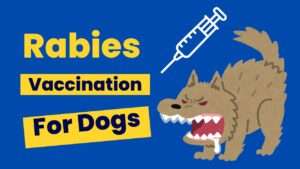

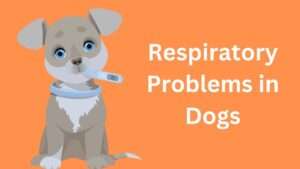



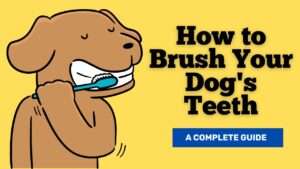







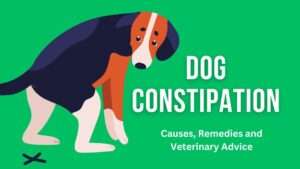

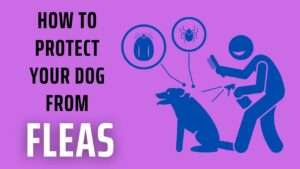
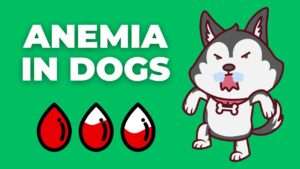

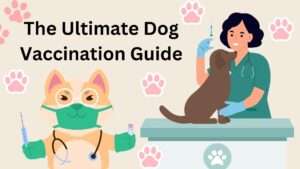
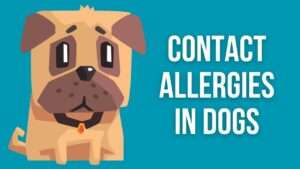



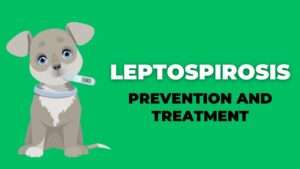







+ There are no comments
Add yours